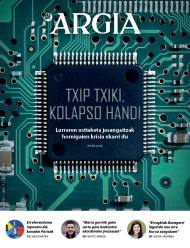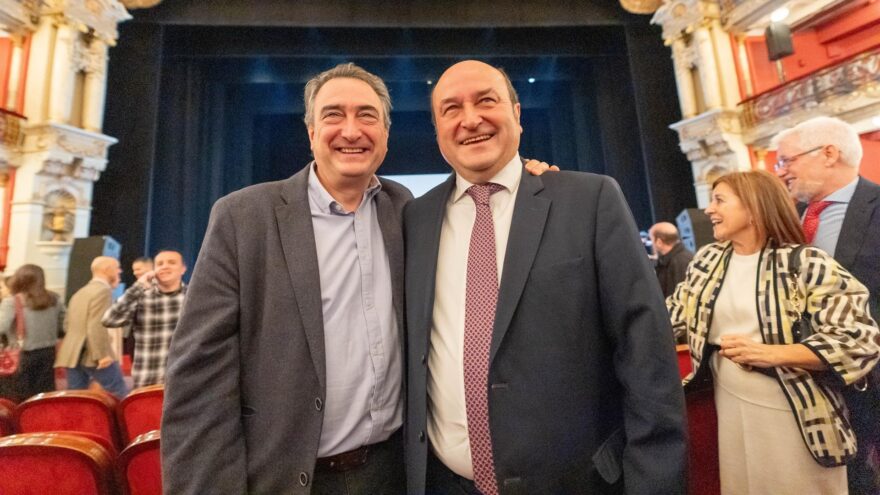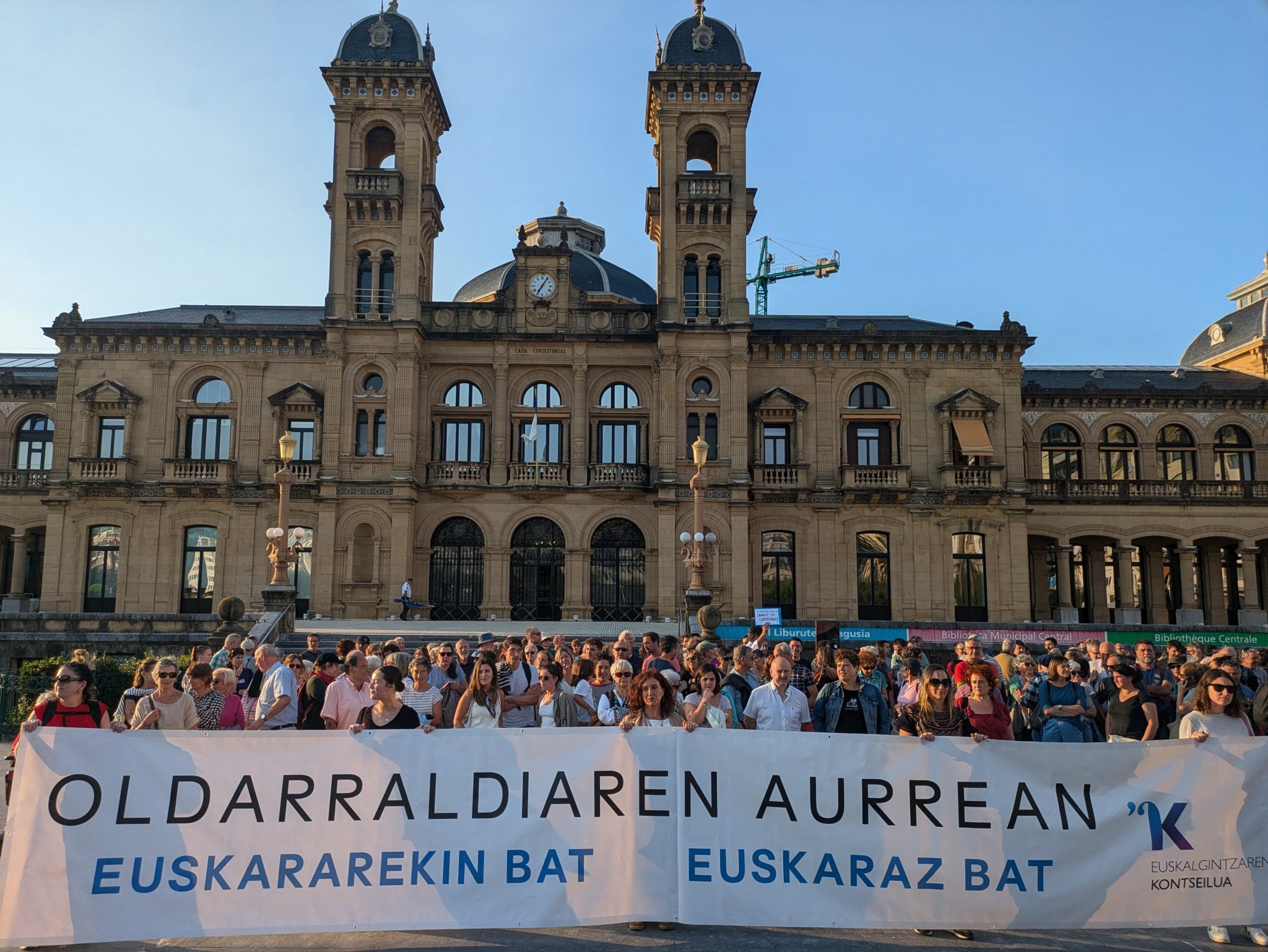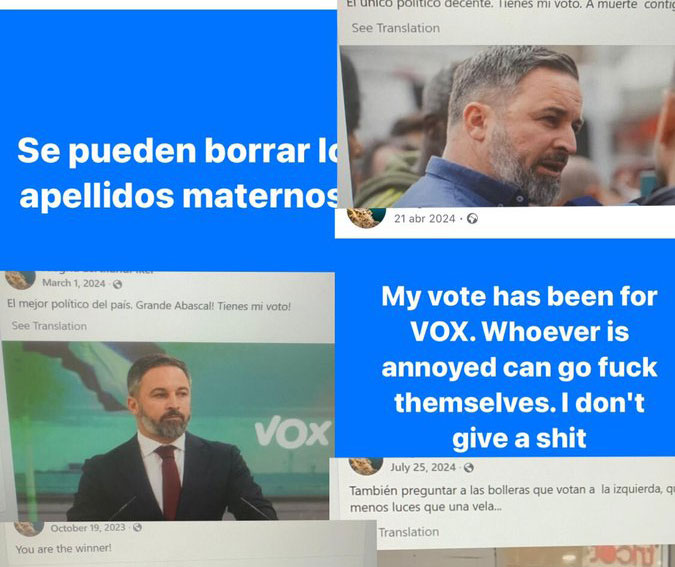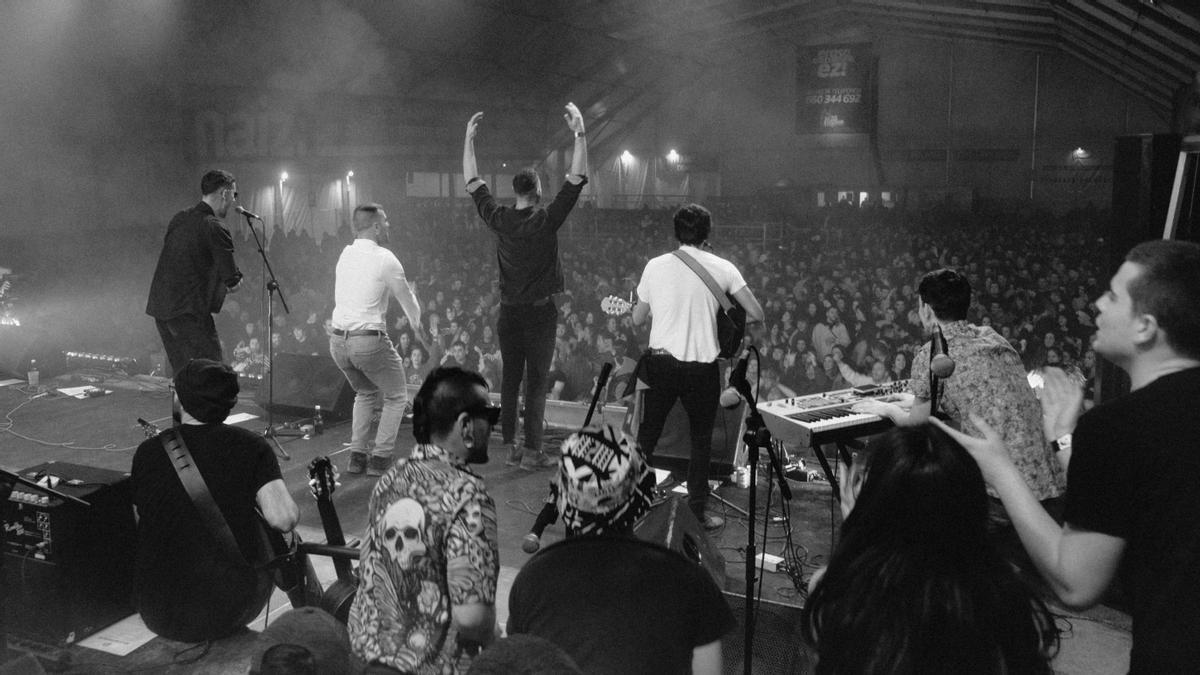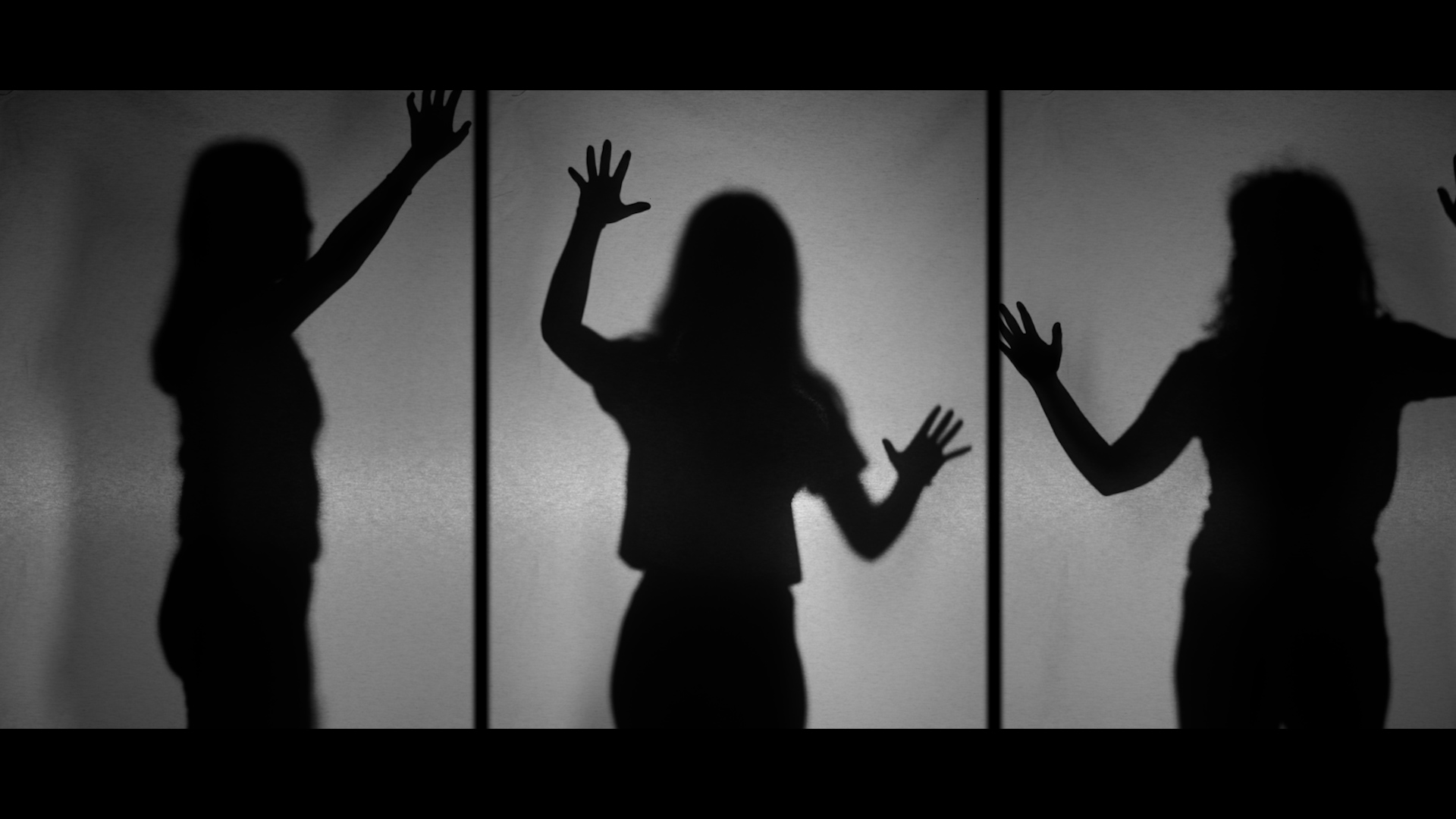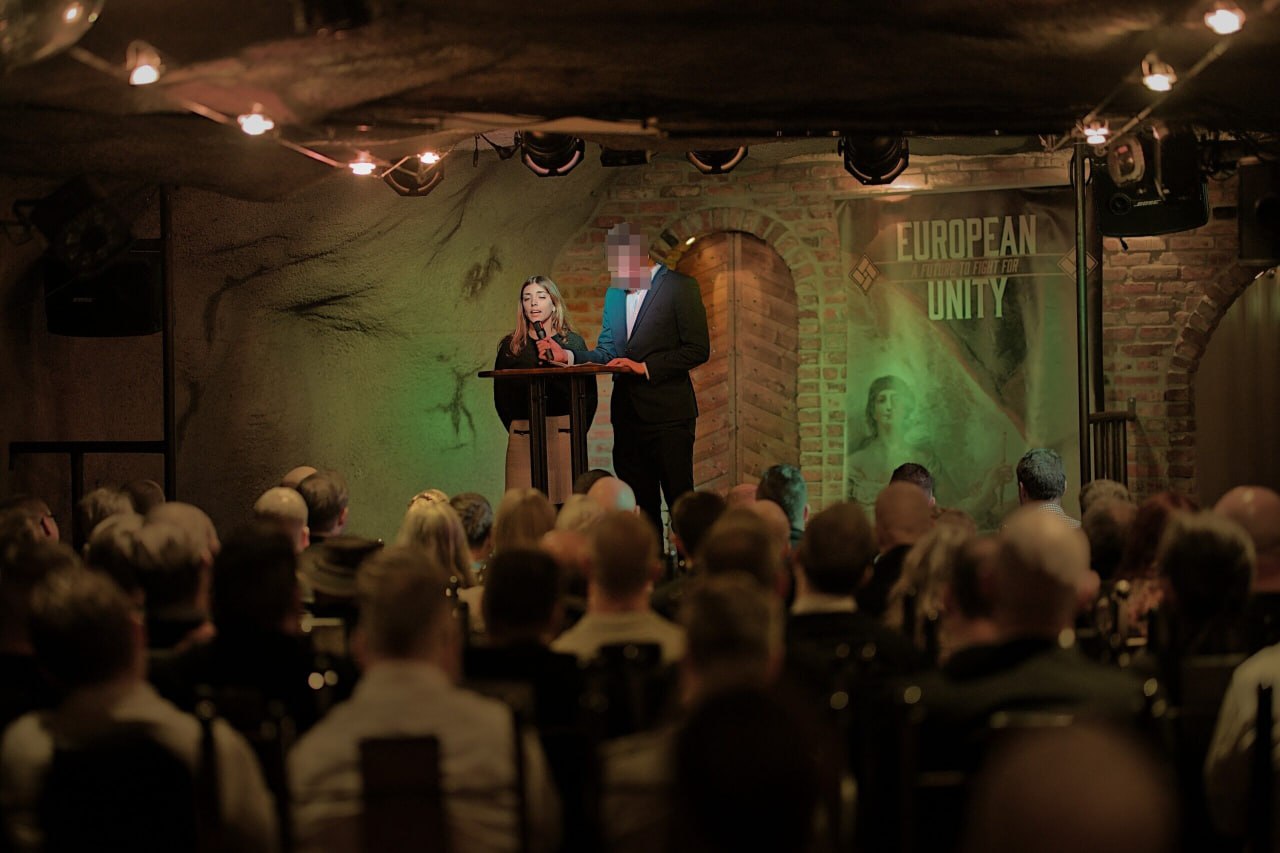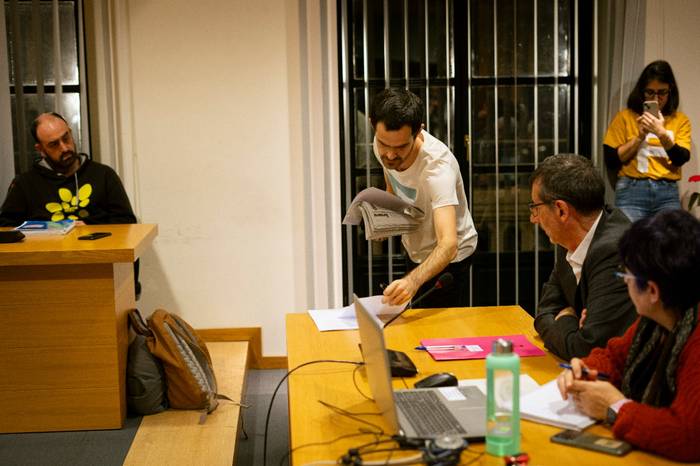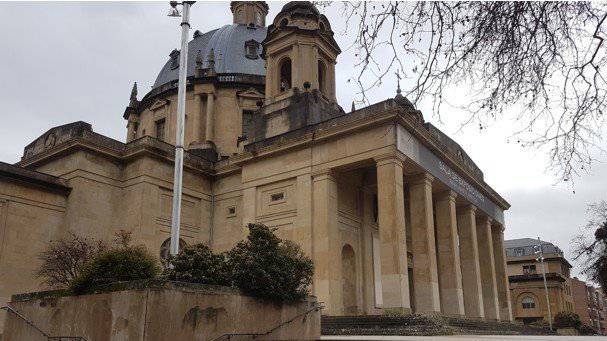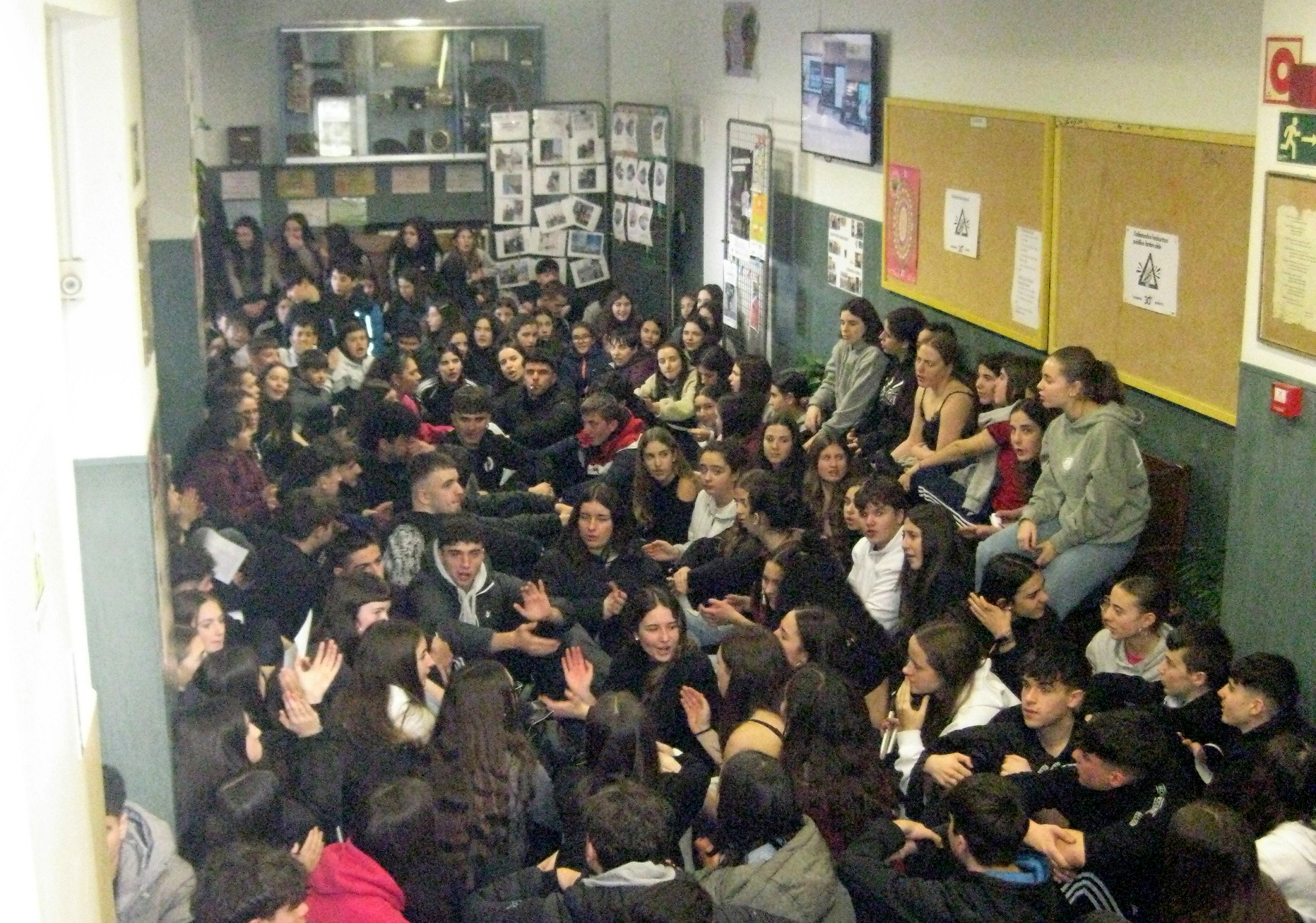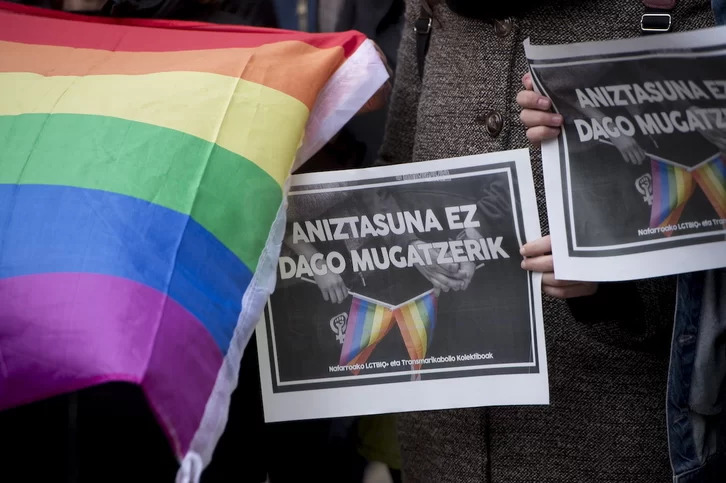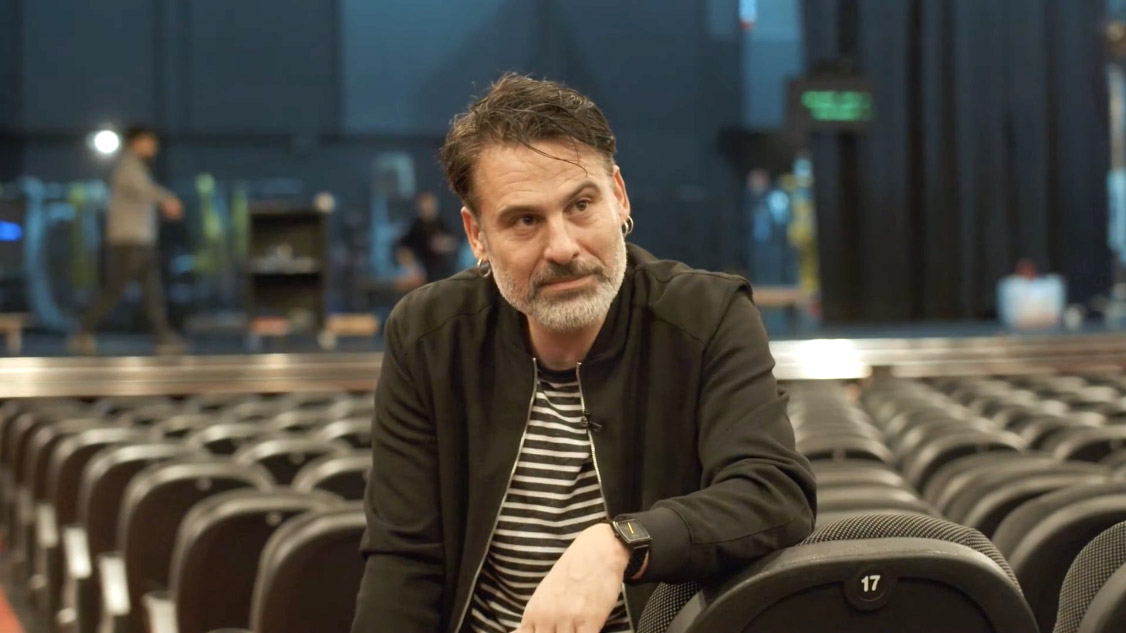"Birth of Lesaka and the periphery is our only chance to get ahead"
- The name of the dance group Led Silhouette shows the philosophy of the creators Martxel Rodriguez and Jon López: LED argia da. Good light, new but sustainable at the same time. Silhouette, among other things, is also the Basque surname (Ziloeta, Xiloeta), although this name, by its appearance, relates us to the outside world.
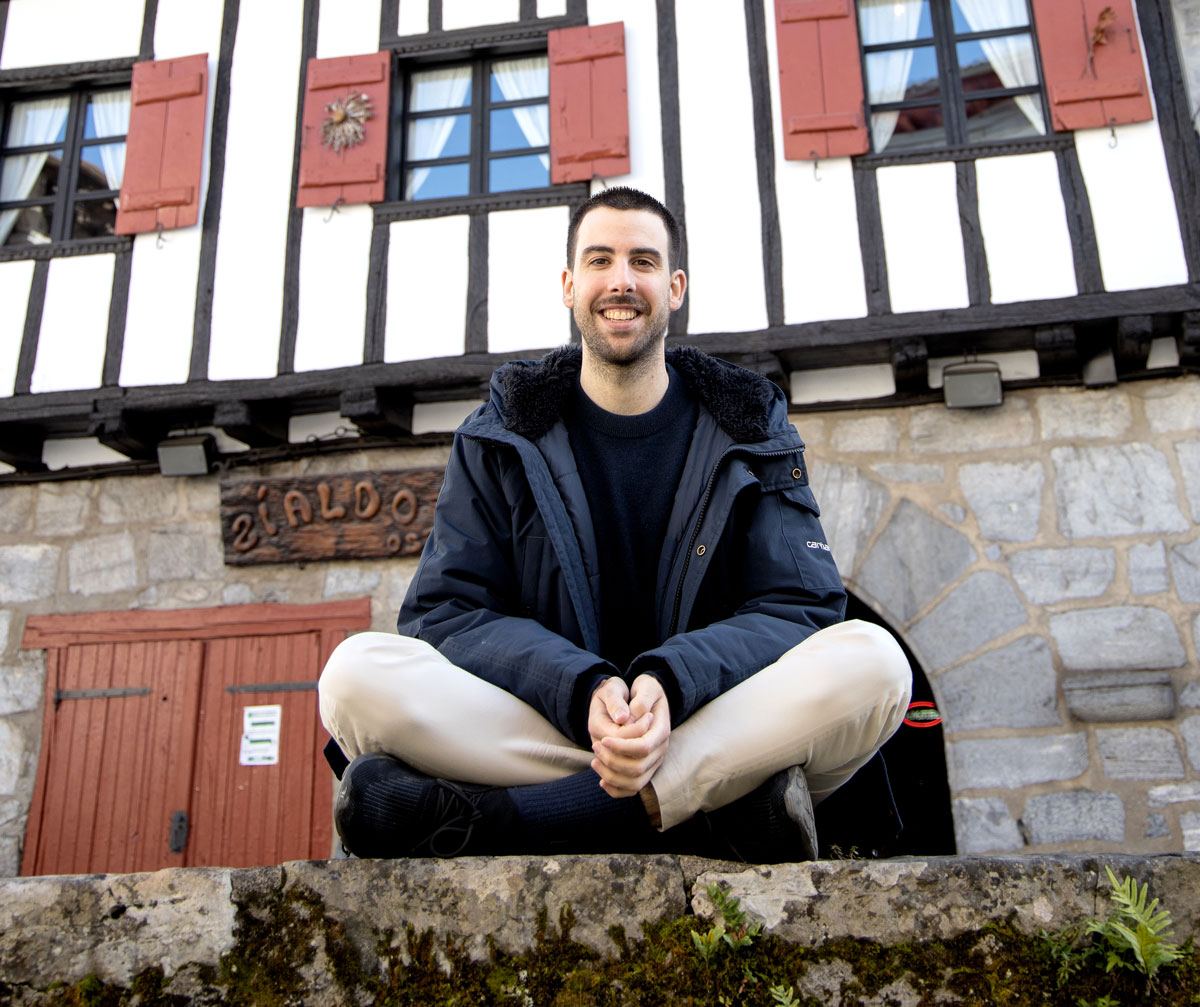
Dantzari eta koreografoa. Lesakan finkatuta dagoen Led Silhouette taldeko sortzaile eta zuzendarietako bat da Jon Lópezekin batera eta, aldi berean, freelance moduan aritzen da hainbat proiektutan. Txikitatik euskal dantzetan eta dantza modernoetan aritu ondoren, balleta eta dantza garaikidean murgildu zen gaztetan. Fisikan graduatu zen EHUn. Danimarkako Black Box Dance Company konpainian eta Kukai Dantza Taldearen Oskara ikuskizunean aritu da, besteak beste.
Aurten Nafarroako Gobernuaren Talentu Artistikoa Sustatzeko saria jaso du eta apirilean Los perros/Zakurrak proiektu berria estreinatuko dute DNA dantza programaren barruan.
At the end of October you have released your new work Lys. Does that mean light, no?
Yes, in Danish. It all emerged in the Guggenheim museum when we saw an installation in the light of artist Olafur Eliasson, and we thought that that could also be applied on stage. In recent years, we've worked with a designer of lights here, Andoni Mendizábal. She's always eager to experiment, and soon she saw that there were enormous possibilities for dancing with light. On the other hand, light can also be seen as hope, and that's all very well because we've come from a dark moment. Those born in the 1990s have had enough crises at the key moments of our lives, and I believe that our work has that desire to change reality. I wish to cry out in an aesthetic and formal way.
So is the new project that is now preparing The Dogs going to work as well?
Yes. Jon is the creator of the Led Silhouette group and on this occasion we will make a duo with the help of the choreographer Marcos Morau. He is a prestigious director, director of the company La Veronal. It was he who made Oskara, for example. We have an intimate friend, he has a very full agenda, and working with him is a lucky one. In a world in dissolution, we want to reflect friendship and love between two people. We want to show that love and fidelity can be the pillars to move forward.
The manifesto of a generation?
Totally. You need to bark the world. We want to show love and complicity, but also the desire to transform reality.
We have received a subsidy from the Government of Navarra for this work and we are planning to release it in April. First we want to do it within the DNA Lesakan program and then at the Gayarre Theatre, on April 29, International Dance Day. To do so, it seems that the astros have also aligned.
Does it have text?
Yes, written. We will put it in several languages with the subtitles. The premiere of Lesaka will be in Euskera, in Pamplona, certainly in bilingual, and future performances in the languages that theatres require us.
For years we’ve seen you at the forefront of Lesaka’s Zubigain dance. Are your first steps in the local dance group?
That's right. Here all the children of Lesaka are aiming for dance and a musical instrument. Then, with age, the boys, above all, stop dancing and often go to football. I liked it and decided to follow it, but it is not my only calling. I believe that people can have more than one vocation. Since I was young, I've had an interest in both science and dance. It may seem that they are contradictory, but I think they have a lot of connection.
Is this connection curious?
Yes. They're both based on searching for what you don't know. We are always looking for new moves in the dance. All the pieces are small experiments.
"We lose the habit of dancing for our educational system, hetero-patriarchate, homophobia, lifestyles and rigid traditions"
What has your trajectory been like?
I started growing up with the Basque dances. Then, when a woman came to give bail-jazz to Lesaka, I signed up. There I discovered that there were other ways to move. He told me I had to do ballet and I studied in Hondarribia and in San Sebastian. While studying physics in Bilbao, I immersed myself in contemporary dance. I had a privileged body for ballet and at the age of 14 I had the opportunity to continue training in Paris, but I planned to stay in Lesaka. Without realizing it, my head closed that dance path and I decided to study physics. On the first day of class, I saw that my classes were not the Frikis that I expected. There was a clarinest, a DJ, a flute, the writer Alaine Agirre was in my room -- and there was a friend who every afternoon went to The Deusto Foundry to take contemporary dance classes.
One day, when we were in the background, I asked him if I could too ir.AllI met Matxalen Bilbao and he told me that in the Arteleku of San Sebastian there was a dance company made up of young dancers, called Dantzaz, to address me there. I was there for a year. A director then arrived from Denmark with the objective of knowing the structure of Dantzaz. He said they would need two boys for the next season and they chose me. I was there for a year and I had the opportunity to follow, but Jon Maia called me to tell me that Marcos Morau was going to come with you to do a project and thought that I, by the body, by the way I moved and by the relationships I maintained with the Basque dances, could be part of the group. He said yes. There I met Marcos and we created Oskara. Then I met Jon, who danced with Marcos in La Veronal. Kukai’s projection and Mark’s talent led Oskara to another dimension. It was a non-precarious project. We had a lot of nominations for the Max Awards, mine, among others, as a dancer. It was a job that gave us a great deal of joy.
.jpg)
You've placed your company in Lesaka. Is it not, therefore, essential to live in a city to live from dance?
None. I think the opposite is the case. Contemporary dance is a plural world and in cities there is great overproduction. We have lived in Barcelona for two years. There we paid a test room per hour. As a cultural agent of the village, in Lesaka we have the opportunity to enjoy the whole theater and we have it one minute from home. When dancers come from outside to participate in a creation, they are surprised. For us to fix in Lesaka was not a better option, but a single option. Leaving Lesaka and the periphery is our only option if we want to move forward.
Our creations are zero kilometers: the designer of lights lives in Bera, the musician Gaizka is from here, the one who makes us clothes, Iñaki Cobos, from Huarte, we have nearby a haberdashery, a small company that works with iron, and everything we need… Most of our references are like this. This is one of the characteristics of our generation. I believe that this is a demand and a need.
And in connection with the pandemic, how have you been?In the dance world we have always had a
great ease to adapt to situations, so COVID-19 has not influenced us tanto.Para the crisis already existed and we have created a kind of bubble in Lesaka so that this effect is not so violent.
Here you live, but you travel often…
Yes, we always return to Lesaka, but we work there where there are theaters. I've been around for five years with the Kukai dance group all over Europe and Jon is the same at La Veronale. It is nice to work for Europe and always return to Lesaka. On the other hand, we feel bad because our carbon footprint is pretty high because of travel. With Kukai I've made a lot of quick two-day trips. Go to Moscow and come, for example. That is why, throughout the rest of the time, we are trying to act as sustainably as possible.
What does it look like to be a dancer physically?
Unfortunately, we do less than we should. I worked in Denmark for a year and I knew other working conditions there. Both fixed companies and freelance companies have the opportunity to conduct training and technical training free of charge. That is unthinkable here. We do yoga, but we also do management tasks, we put a lot of hours of computer and that affects cuerpo.En the Government of Navarra, since the change, we perceive the
desire to change things and improve the working conditions of the creators, but this sector still does not come out of that hole.
"In the Government of Navarra, since the change, we perceive the desire to change things and improve the working conditions of the creators, but this sector still does not come out of that hole"
Isn't aging scary?
No. I believe that the body has a value in every phase. Matxalen Bilbao, a reference for me and a great professor, says that it has been his best phase from the age of 40. He's a dancer and creator, and he's still on stage. Watching dancing with her age is brutal. He has another experience, another floor... There are a lot of memories reflected in this body, and that's also appealing. You have to know how to take advantage of the body in each phase. We are now in the era of virtuosity, but we are becoming more and more aware of each movement. This fear of age is a rigid vision that comes mostly from ballet. In this it is common to have to retire from the age of 40, but in contemporary dance there is the possibility of continuing. The body is, in short, a composition of multiple stories that serves to tell countless stories.
Do others live disconnected from the body?
It's a bypass. This connection is very scarce in general, especially in the Western world. You just have to look at the way you walk and the body's movements to realize it. There are many rigidities in the DNA of the Basques.
Are women more connected? Do we have permission for that? 90%
of our audience is a woman, if we do any workshop 100% are women... There are few dancers, many choreographers, and more theater directors. It happens like at university: among students, for example in Physics, we were half and half, and then in PhD we were less women and fewer professors.
Is the dance minded?
Yes and in part due to poor connection with the body. We always feel the need to understand and in dance performances many people are lost. I think, though, that the public is beginning to recognize that you don't have to understand anything, but go, be and enjoy or suffer that path. The problem is that we do not know how to be in many ocasiones.En the last few years the dance has had and it is a bit of a boost in Navarra.
osé Lainez and Concha Martínez have been the parents of contemporary dance. They and many other professionals, like Carmen Larraz, have worked a lot in the most difficult times. We are now lucky that policies with today’s culture are not like those of the UPN era.
This year he has been awarded the Talent Prize of Navarra. What was it for you?
Special milestone. It seems that our work is very nice from the outside, that we were born here in Lesaka and we show our pieces throughout Europe... but we ask ourselves every day what we are doing. Most people in my environment have a permanent job. Many of them are professors. I'm also a teacher and I'm on lists. During a season I was a physics professor at an institute in Pamplona... The world doesn't know where it's going, and we're dancing with each other. We have a lot of doubts in our heads, and that is why this prize was a recognition of our work. And a collective joy at the same time, because they've rewarded dance.
"For us to fix in Lesaka has not been a better option, but a single option. Leaving Lesaka and the periphery is our only option if we want to move forward.
Is it worse seen today to dance than in the past?
Yes, a pity. In Lesaka, first of all, everyone was dancing in the village square, and in my teenage years, I saw that only the girls were dancing. In Lesaka, football has a lot of strength and there comes a time when the kids leave the dance to go to football and what comes out of that path is rare, marginalized...
I have always received great support in the village, but there are a lot of people to keep dancing which has been a little weird.
Are you good at other types of dance?
Our goal is to have the body always prepared for any kind of motion or dance. I, for example, don't know the concrete moves of high school, but in a sequence that I would learn.
I love going out to dance at night. I don't understand how people can do juerges by themselves and chatting. However, I am optimistic. I think we've started to dance more and more. I see the Basques more open and encouraged to move their hips. Basque music is also exploring new styles and perhaps through these ways we will begin to liberate our body more.
* * * * * * * * * * *
ALWAYS DANCING
“The question doesn’t make sense when you started dancing. The question we have to ask ourselves is, have you ever stopped dancing? '. In Euskal Herria, in the Western world in general, it is thought that it is normal for children to dance, but not so much adults. That's why, for many reasons, over time, dance is left and the connection with the body is lost. We lose the habit of dancing as much as possible, therapeutically and spiritually, by our educational system, hetero-patriarchate, homophobia, life forms and rigid traditions".
Vagina Shadow(iko)
Group: The Mud Flowers.
The actors: Araitz Katarain, Janire Arrizabalaga and Izaro Bilbao.
Directed by: by Iraitz Lizarraga.
When: February 2nd.
In which: In the Usurbil Fire Room.









